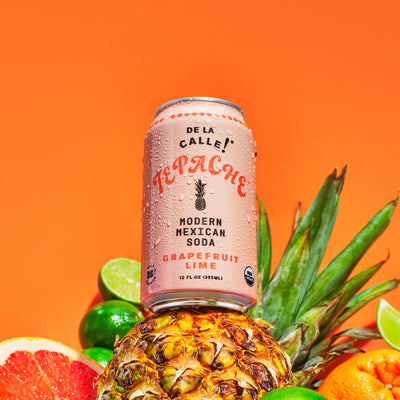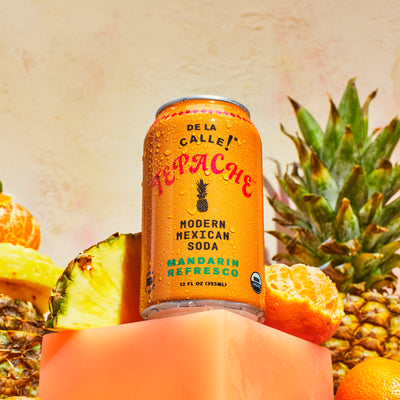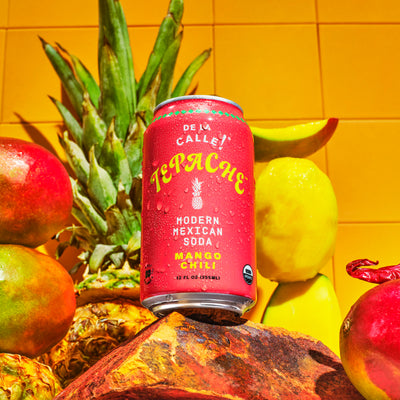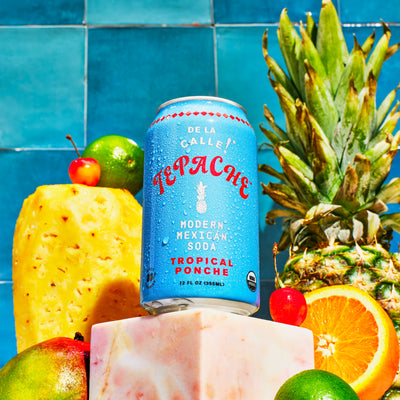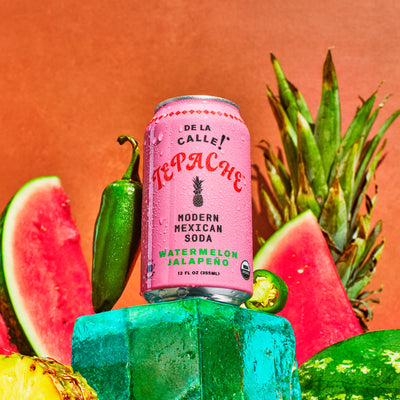Fermentation: Definition, Process, and Facts

Fermentation is a naturally occurring process that happens in our bodies and in the production process of many delicious foods and beverages such as sauerkraut, cheese, sourdough bread, kombucha, and Tepache.
In this article, we’ll look specifically at fermentation as it occurs in foods and beverages, answering key questions about the process, variations, and benefits of fermentation. We’ll also dive into the thousands-year old history of fermentation and the various uses it has served.
The Basics of Fermentation
At the most basic level, fermentation in food refers to the process that makes foods either more digestible, flavorful, nutritious, or a combination of all three. Although the word fermentation comes from the Latin word “fervere” which means “to boil,” boiling is not an essential part of the fermentation process.
That being said, the most essential part of the process are the microbes that actually carry out fermentation. Microbes are microorganisms that convert carbohydrates into different alcohols and acids during the process of fermentation.
The end result of fermentation are foods and beverages that are often more nutritious than their unfermented forms that can last for much longer before spoiling.
What happens during fermentation?
All microorganisms need carbohydrates such as sugars like glucose to make energy that is essential to their survival. In order to transport energy to all the different parts of the cell, chemicals like adenosine triphosphate (ATP) act as the cell's delivery system. Respiration and fermentation are the processes through which ATP is produced by cells and microbes.
Fermentation is a type of anaerobic energy production, similar to anaerobic respiration, that occurs in environments where there is not enough oxygen present to engage in aerobic respiration.
During fermentation, microorganisms such as yeast and bacteria convert sugars into different products like alcohol and yeast, produce enzymes needed for digestion, and break down foods that are hard to digest before anyone eats them.
Fermentation always begins with glycolysis wherein glucose is converted into pyruvate. From there, different actions occur depending on the different types of fermentation.
What are the three different types of fermentation?
There are three main types of fermentation that we’ll dive into in this section: lactic acid fermentation, ethyl alcohol fermentation, and acetic acid fermentation.
- Lactic Acid Fermentation: This type of fermentation involves the conversion of glucose into lactate as NADH transfers its electrons to pyruvate. This results in the production of lactate, a form of lactic acid. Lactic acid fermentation occurs in the human body in muscle cells and red blood cells. The bacteria that make yogurt and tepache also carry out lactic acid fermentation.
- Ethyl Alcohol Fermentation: You’re probably familiar with the byproducts of this type of fermentation if you’ve ever had wine or beer. In this type of fermentation, glucose is converted into ethanol as NADH donates its electrons to a pyruvate derivative in a two-step process. In order to make beer and wine, yeast undergoes ethyl alcohol fermentation and produces ethanol.
- Acetic Acid Fermentation: This type of fermentation involves converting sugars and starches from grain and fruits into sour vinegar and condiments. For example, the difference in flavor between apple cider and apple cider vinegar is due to acetic acid fermentation. Wine vinegar and kombucha are also the products of acetic acid fermentation.
What are the stages of fermentation?
Although the number of stages involved in the fermentation process depend on what is being fermented, there are two main stages that you should know.
- Primary Fermentation: In the first stage of fermentation, known as primary fermentation, microbes or yeast convert the carbohydrates in the raw ingredients into alcohols, acids, ets. Common raw ingredients include vegetables, dairy, and fruit such as pineapple in the case of tepache. The microbes that facilitate this stage of fermentation are often found in the liquid, sometimes referred to as the brine when fermenting vegetables, in which the raw ingredient is submerged. As well as converting sugars, the microbes in the brine prevent other bacteria from colonizing the food.
- Secondary Fermentation: The much longer stage of fermentation is the second stage, known as secondary fermentation, and can last for several days or even weeks. This stage is most commonly used in making wine and beer. As secondary fermentation occurs, the alcohol level of the fermented liquid raises. This kills off the yeast or microbes that initiated primary fermentation because their food source gradually dwindles.
History of Fermentation
Fermentation is one of the oldest food and beverage preparation methods, with evidence of the first fermented foods dating all the way back to 10,000 BCE. It’s thought that people were unintentionally fermenting different types of milk as it was transported in extreme heat conducive to lactic acid fermentation.
The first fermented beverage dates back to Neolithic China, around 7000-6600 BCE, where a combination of fruit, honey, and rice was fermented to make an alcoholic drink.
Although fermentation has been utilized by humans for thousands of years, it was only in 1856 that Louis Pasteur discovered the mechanics of fermentation which he described as respiration without air. About 50 years later, in 1910 Elie Metchnikoff, a Russian scientist, discovered the incredible health benefits of fermented foods after analyzing the diets of Bulgarians who had a noticeably long life span and consumed large amounts of fermented milk.
While it took quite a long time for the science behind the benefits of fermented foods to come out, the great benefit of fermentation is that it provides an extremely cost-effective way to preserve foods.
Given that the “bad” bacteria that causes food spoilage cannot exist in the oxygen-free environment in which fermentation occurs, this method of food preservation is an excellent way to ensure access to fruits and vegetables during times when fresh produce is not available.
In the last 40 years or so, fermented foods have become wildly popular, with some sources claiming that the number one trend in health foods in 2013 was fermented foods. For this reason, it’s common to see products from yogurt to kombucha to kimchi to Tepache that proudly advertise they are rich with probiotics.
What are the benefits of fermentation?
Since Metchnikoff’s discovery in 1910, ample research has been done that proves the immense health benefits of fermented foods. The primary reason that fermented foods are so beneficial is because they are rich in probiotics.
Probiotics are microorganisms that boost both the immune and digestive systems. They also neutralize anti-nutrients which are compounds often found in grains, legumes, and nuts that reduce the body’s ability to absorb nutrients.
Fermentation also raises the levels of vitamins and minerals in food such as vitamin C and B, biotin, folic acid, and many other vital nutrients. The aforementioned probiotics, enzymes, and lactic acid also aid the body in absorbing these vitamins and minerals.
Summary
Fermentation is a thousands year old process that makes food more nutritious, long-lasting, and easier to digest. There are three main types of fermentation used in food production: lactic acid, alcohol, and acetic acid fermentation. The two main stages of fermentation are primary fermentation wherein the carbohydrates in food are turned into alcohols and acid and secondary fermentation, often used in making wine and beer.
There are several benefits to incorporating fermented foods and drinks like yogurt and tepache into your diet. These foods are high in probiotics which boost the immune and digestive systems and increase the nutritional value of food.
It’s a great idea to make fermented foods a staple in your diet because they are both delicious and incredibly healthy!
Sources:
https://www.ncbi.nlm.nih.gov/books/NBK553175/
https://www.healthline.com/nutrition/how-to-reduce-antinutrients


